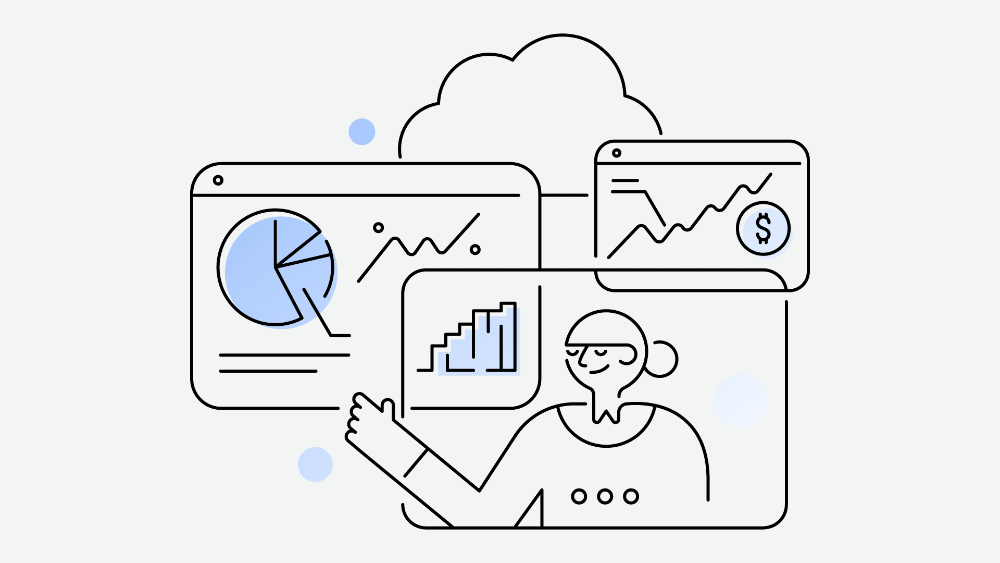
The past year presented numerous challenges for Human Resources. Employees transitioned to working from home, completely or partially; internal and external processes were restructured; and pay cuts and layoffs occurred as business was lost. HR relies on a large amount of data for administration, billing, qualification and organisation. This requires a solid IT infrastructure, which must be accessible from remote locations.
Payroll and administration are even more challenging. For security reasons, these are usually handled separately and connected to other systems via interfaces. Even today, the data is often transferred via email through reports or spreadsheets. This is unwieldy, especially considering how job advertisements can now be linked directly to job boards and internal recruitment systems. It is time to upgrade these legacy processes. Cloud-based solutions are gaining popularity, but many HR managers and companies still resist this move.
Advantages of unification in the cloud
Cloud-based solutions offer many advantages. Every process from recruitment to retirement can be managed without any additional IT investment and without a system stop. The data is available anytime, anywhere, and HR staff and employees can gain access through a uniform user interface with appropriate access privileges. This ensures a consistent and high-quality experience across various locations. Workflows and approval processes are also seamlessly integrated for greater efficiency, making it useful for payroll and time management. With a cloud-based payroll solution, companies can remain agile even during a crisis.
If personnel administration, recruitment, talent management and succession planning are no longer handled on the company's internal systems, then why isn’t this being applied to billing and time management? This can be unnecessarily frustrating for employees. What’s more, it takes a lot of work to keep outdated systems compliant with Singapore’s regulations, which are still in flux as requirements are constantly being revised. As specialist personnel reach retirement age, the work needed to keep legacy systems relevant will become increasingly challenging.
High degree of acceptance
Because salary data is particularly sensitive, some HR managers may be wary of transitioning to the cloud but holding data within the business doesn’t always make it safer and these concerns should not hold them back. After all, Singapore has one of the region’s most advanced public cloud markets, propelled by government initiatives and policies promoting the use of public cloud systems. According to ComputerWeekly, approximately 90% of Singapore companies have implemented cloud technology. Most firms agree that the future is in the cloud, although many saw data security as the biggest hurdle to successful adoption.
Minimum requirements for uptake
For companies to bring their payroll to the cloud, two minimum requirements must be met. First, it should be easy to use and automatically offer relevant assistance such as adapting to new rules, regulations, or legislation. Second, data must be completely protected against misuse and ensure compliance across multiple locations. This is the only way to ensure that HR teams are comfortable and productive following the transition. Support and advice on optimising payroll processes can also go a long way.
New implementation vs. smooth transfer
Payroll accounting is highly complex factoring in company agreements, collective agreements, company exercises as well as a wide range of benefits and retirement provisions. This can be a barrier to cloud adoption for HR managers. Some may have bad memories relating to the roll out of previous legacy IT systems which often led to overtime hours and unexpected crises.
However, there are cloud solutions designed to address these exact concerns, allowing a direct transfer of existing workflows using data imported from the legacy system. This retains the functionality of the old system along with billing and time management records, while introducing new best-practice processes. The learning curve is small and business interruptions are limited. What’s more, system maintenance can be entrusted to the cloud provider, who will also ensure compliance with employment laws and other regulations. Many providers also offer individual add-on services for customers to choose from, bringing all HR data needs under one umbrella.
A cloud-based solution can also come in handy for companies that decide to implement work arrangements that combine working from home and office hours. However, transformation will require sufficient resources and comprehensive change management, along with the appropriate training.
Looking for a way to move your payroll to the cloud?
Check out our “Lift, Shift, Transform" e-book


